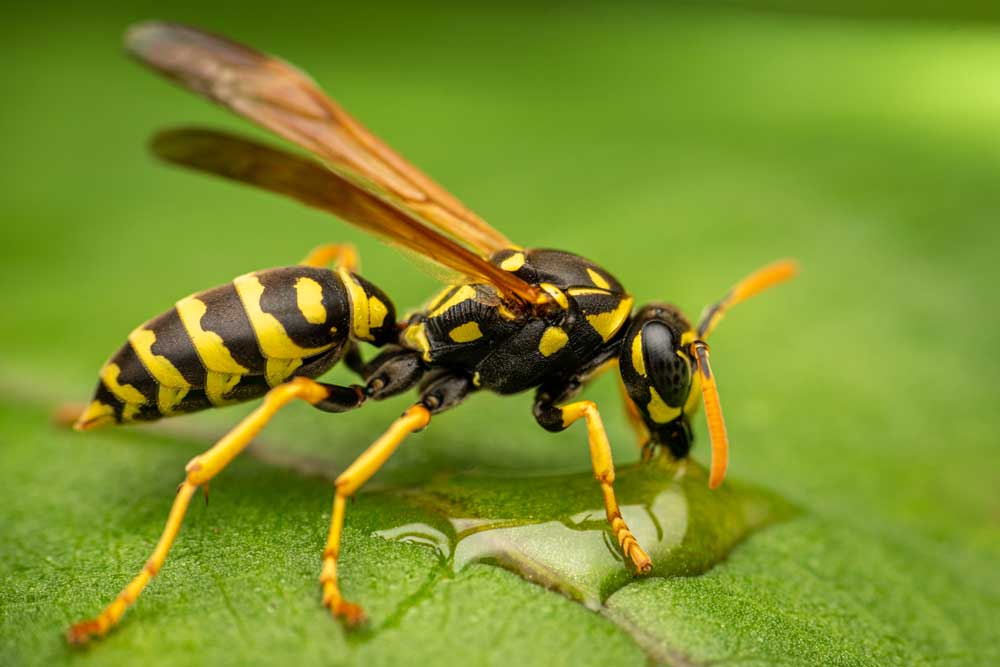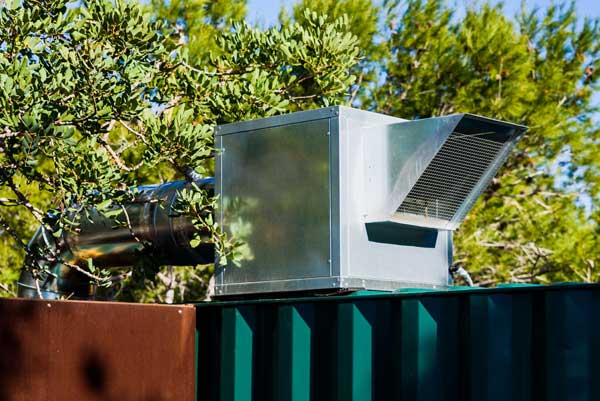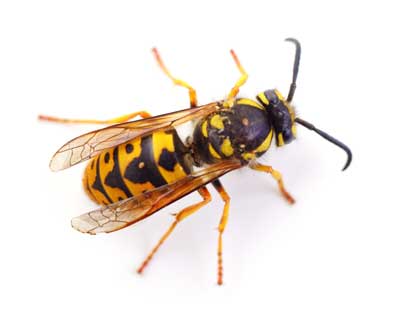Wasp Nest in Vent: How to Spot, Remove, and Prevent It
A wasp nest in vent systems, whether in bathroom fans, kitchen extractors, or attic ducts, can be more than just a nuisance. In Ireland, spotting a wasp nest in vent openings is a growing issue during the warmer months. It’s a common but often overlooked hazard in Irish homes, especially during the warmer months. Left unmanaged, it can lead to stings, allergic reactions, indoor infestations, and even costly damage to your ventilation system.
Understanding why wasps target vents, how to recognise the warning signs, and what steps to take is key to keeping your home safe and comfortable throughout the breeding season.

Why Vents Attract Wasps in Irish Homes
Vents provide ideal nesting conditions for wasps, particularly queen wasps emerging from hibernation in early spring. These insects instinctively look for enclosed, sheltered areas where they can build a nest and avoid predators. Vents offer just that, along with a steady temperature, structural support, and infrequent human disturbance.
Here’s why wasps commonly choose vent systems:
-
- Shelter from the elements: Vents are typically dry, protected from wind and rain, and located on the exterior of the building.
- Low traffic areas: Attic vents, soffit vents, and older extractor systems are rarely inspected or cleaned.
- Warmth and insulation: Wasps are drawn to heat sources. Warm air passing through a vent makes it an attractive place to build a nest, especially if it’s connected to kitchens, bathrooms, or utility rooms.
- Close to food sources: Outdoor bins, compost heaps, and flowering plants nearby can increase the likelihood of wasps nesting close to the building.
Once a queen has chosen a spot, she will begin constructing a small nest using chewed wood fibres mixed with saliva, forming the papery material we associate with wasp nests. Over time, and with help from worker wasps, the nest can grow rapidly and become a serious infestation. In some homes, a wasp nest in the vent systems can eventually lead to nearby infestations, including a wasp nest in soffit areas or a wasp nest in roof tiles, especially if left unchecked.

Signs of a Wasp Nest in the Vent
Early detection is the best way to prevent a full-scale infestation. A wasp nest in the vent systems might not be immediately visible, but there are several tell-tale signs to look out for:
-
- Increased wasp activity near vent openings: You may notice wasps flying in and out of a vent grill regularly, especially during daylight hours.
- Buzzing sounds behind walls or near ducts: A constant low humming or buzzing coming from inside your home, particularly in kitchens, bathrooms, or attics, can indicate an active wasp presence inside the ducting.
- Debris or nest fragments: Bits of grey, papery material near the vent outlet or on floors and windowsills are a sign that a nest may be forming inside.
- Unusual airflow or smells: Blocked or compromised ducts can result in restricted airflow, dampness, or stale odours in rooms connected to the affected vents.
These symptoms are especially common from May to September, when wasp activity is at its peak in Ireland.
Dangers of a Wasp Nest in Vent Systems
It may be tempting to ignore a small nest, especially if you’re not seeing wasps indoors. But the risks associated with a wasp nest in the vent systems should not be underestimated. Here’s why action is important:
1. Stings and Allergic Reactions
Wasps are territorial and will aggressively defend their nest if disturbed. That includes noise or air movement from fans, extraction units, or nearby human activity. A single sting can be painful, but for those with allergies, it can be life-threatening.
2. Indoor Infestation
If the nest is accidentally sealed in or disturbed, wasps may chew through soft duct insulation, drywall, or ceiling panels to escape, similar to what happens with a wasp nest in the wall.
3. Damage to Ventilation
Nests inside ducts can block airflow and overheat extractor fans or clog pipes, leading to poor ventilation and possible moisture problems. Over time, this can result in mould, structural damage, or expensive HVAC repairs.
4. Fire Hazards
While rare, there have been reports of nests causing overheating or even fires in older electrical extractor fans. A large nest around exposed wiring can become a serious fire hazard, especially if the fan motor is damaged or jammed.
How to Remove a Wasp Nest in a Vent Safely
If you discover or suspect a wasp nest in vent areas, it’s important to act with caution. Attempting to remove a nest without the right knowledge or equipment can make the situation worse, both for your property and your safety.
Here’s a step-by-step guide to handling it properly:
- Turn off all connected ventilation systems
This stops warm air from attracting more wasps and reduces movement that might agitate the nest.
- Avoid blocking the vent
Don’t try to seal off the vent with tape or covers. Trapping the wasps may cause them to force their way indoors in search of an exit.
- Use wasp spray cautiously
Only use sprays that are specifically designed for use around vents. Apply early in the morning or late evening when wasps are less active. Wear protective gear and never spray blindly into indoor vents; you risk driving the wasps further into your ductwork or living space.
- Do not attempt to dismantle the ducting yourself
If the nest is lodged deep inside the system, disturbing it could cause panic in the colony. This may lead to aggressive swarming and multiple stings.
5. Call a professional for large nests or hidden locations
If the nest is hard to access or activity is high, professional pest control services are strongly advised. They use insecticidal dusts, vacuum tools, and protective equipment to remove the nest completely and safely, without damaging your vent system. In more environmentally conscious homes, natural wasp removal techniques may be used when dealing with small nests near vents, offering safer alternatives to chemical sprays.
Preventing a Future Wasp Nest in the Vent
Once the immediate problem is dealt with, take steps to prevent wasps from returning next season. Here are some preventative tips:
-
- Install vent mesh covers
Fine stainless steel or pest-proof mesh can be fitted over exterior vent openings to keep insects out without affecting airflow. - Seal surrounding gaps and cracks
Use caulk, foam, or steel wool to block access points around vent pipes, bricks, and soffits. - Keep outdoor bins closed and away from vents
Sweet smells and food waste attract wasps to the area. Relocate bins if needed. - Trim back vegetation
Bushes, trees, and climbing plants near vents offer wasps shelter and nesting material. - Inspect vents seasonally
Spring is the ideal time to check vents before queens start nesting. Early removal of a small nest is much safer than waiting until summer. You can also refer to our step-by-step guide on how to remove a wasp nest to understand the process and when to seek help.
- Install vent mesh covers
Summary
A wasp nest in the vent ducts poses real risks from stings and allergic reactions to costly damage and even fire hazards. Wasps favour vents because they’re warm, dry, and undisturbed, making them an ideal breeding site. Spotting early warning signs like buzzing or increased wasp traffic can help you intervene before the problem escalates.
Spotting the signs early, especially during peak wasp breeding season, is key to preventing a small nest from turning into a larger issue. If you find a nest, never block the vent or attempt DIY removal in risky areas. Instead, rely on professional pest control and follow prevention tips to stop them from coming back.
contact form
Get Professional Help Before the Nest Spreads
If you suspect a wasp nest in vent systems around your home or business, don’t wait for the infestation to grow. These hidden nests can quickly become dangerous and disruptive if left untreated.
For expert support and guaranteed results, call 087 254 2839 or book online. Our wasp nest removal service covers Dublin, Meath, Kildare, and Co. Louth.
